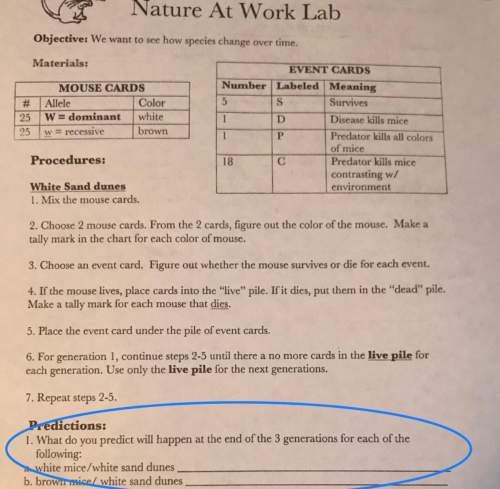
Biology, 24.10.2019 02:20 lavishbre12
Most mutations lead to a decreased chance of survival for the mutant organism. rarely, a mutation can provide an increased chance of survival. these rare mutations provide a(n) for the mutant.
a. selective disadvantage
b. environmental susceptibility
c. directional shift
d. adaptive
e. selective advantage

Answers: 1


Other questions on the subject: Biology

Biology, 21.06.2019 19:30, norefo4416
You have 2 plants of the same type and same size, same amount of leaves. one of them is put inside the house and the other one is put in the balcony. you water them saturday, one plant with 200 ml and the other with 400 ml of water. which one of your plants need less water? explain.
Answers: 1


Biology, 21.06.2019 23:30, stankyweezle
In iceland, the mid atlantic ridge runs through the center of the contry. what can you conclude about the apperence of iceland many thousands of years from now?
Answers: 1

Biology, 22.06.2019 01:00, zacksoccer6937
How are mutations continually being generated in a population (what are some of the causes of mutatuions? ) explain
Answers: 1
You know the right answer?
Most mutations lead to a decreased chance of survival for the mutant organism. rarely, a mutation ca...
Questions in other subjects:














